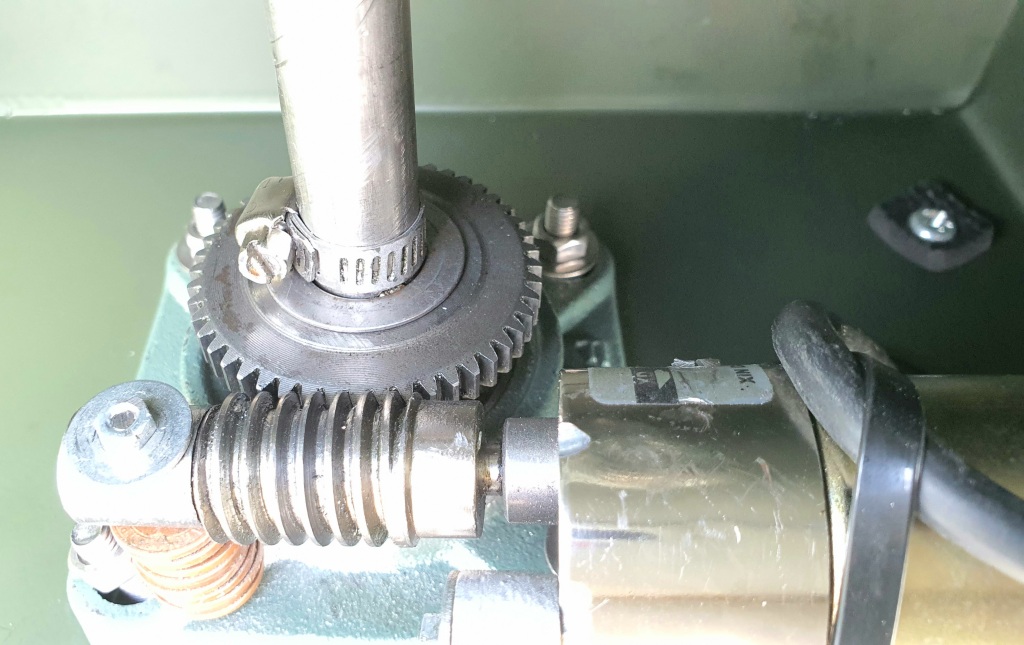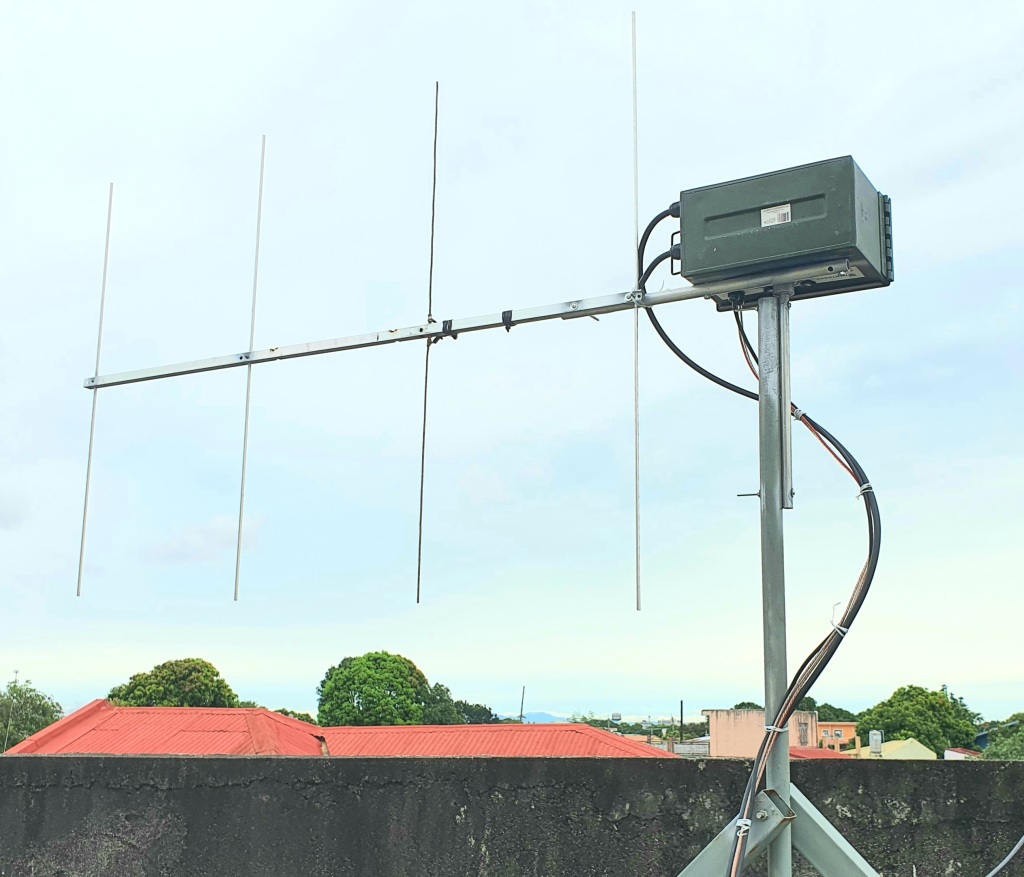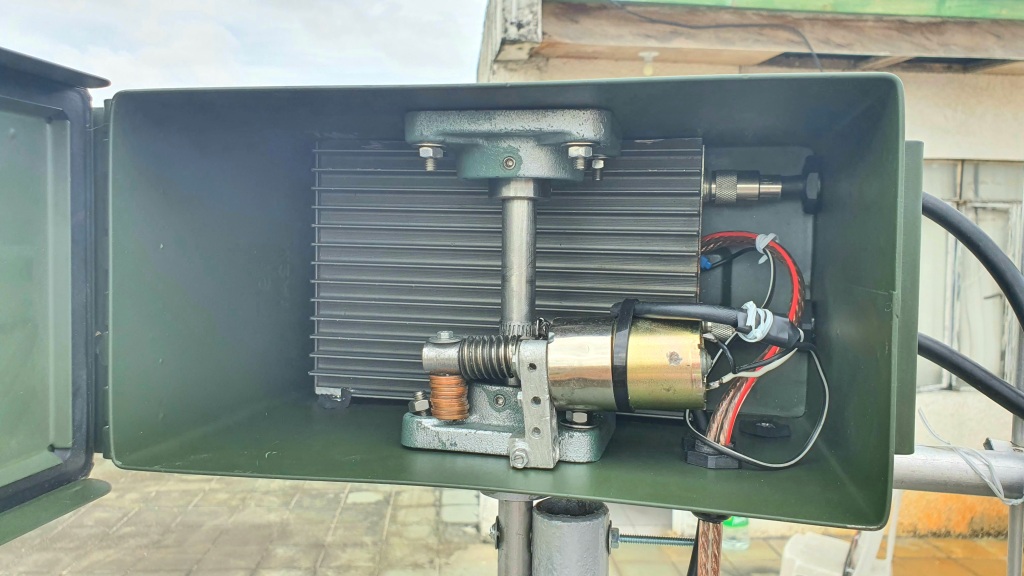I’ve recently finished building a DIY rotator with 4-element dipole Yagi antenna tuned at 145 MHz VHF.

DIY Rotator by DU1AU
The rotator consists of a worm drive in which a worm from an old copier machine meshes with a wheel from an old drill. The shaft is a stainless steel rod that is held in place by two pillow block bearings. The whole assembly is housed in a waterproof metal ammo box. It has an oil ring gasket to seal the hole at the bottom where the shaft goes through. The screws used to mount the pillow blocks are stainless steel to resist corrosion, with rubber gaskets to prevent water entry. The rotator uses a 12V geared DC motor to drive the worm gear. With the current load, it consumes only 200 mA when slewing. The rotator was tested to carry a VHf Yagi with up to 7 elements. It takes 10 seconds to slew the antenna from north to south.

DIY 4-element Yagi mounted on a DIY rotator
In the next iteration of this project, I will increase the separation between the antenna and the metal box enclosure to minimize the effect to the radiation pattern of the antenna.

RX preamp and TX amplifier installed in the rotator’s weatherproof box
I’ve also installed a Tokyo Hy-Power HL-726D 50-watt TX amplifier and 12-14 dB gain RX preamp, which helps in receiving weak signals (when placed near the antenna) and allows my radio to operate at a lower power level since only 5-25W is needed to drive the amplifier. During initial tests (no RX preamp and TX amplifier used), the antenna worked with excellent transmit and receive signals as reported (and video recorded) by DW3QEA, a net control station in Nueva Ecija, over 120 km distance from my location in Bacoor.

Elevation motor added recently to the rotator for satellite tracking
To watch a video about this homebrewed rotator, click here.
Related links:
DIY Satellite Tracker | SARCNET
DIY Satellite Tracker | SATNOGS